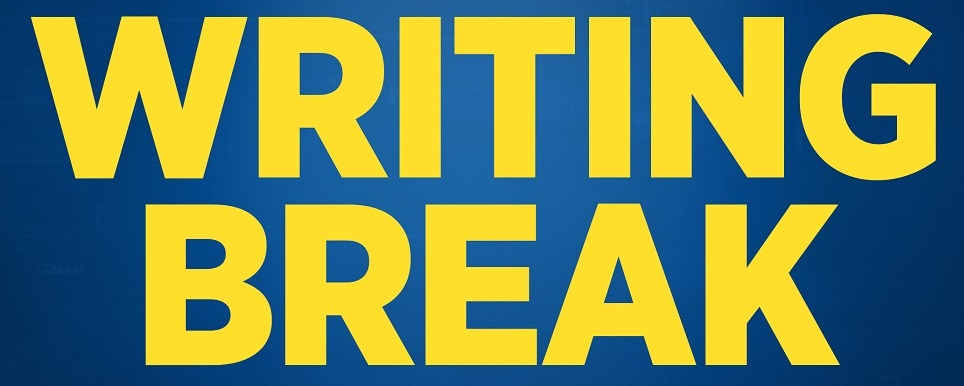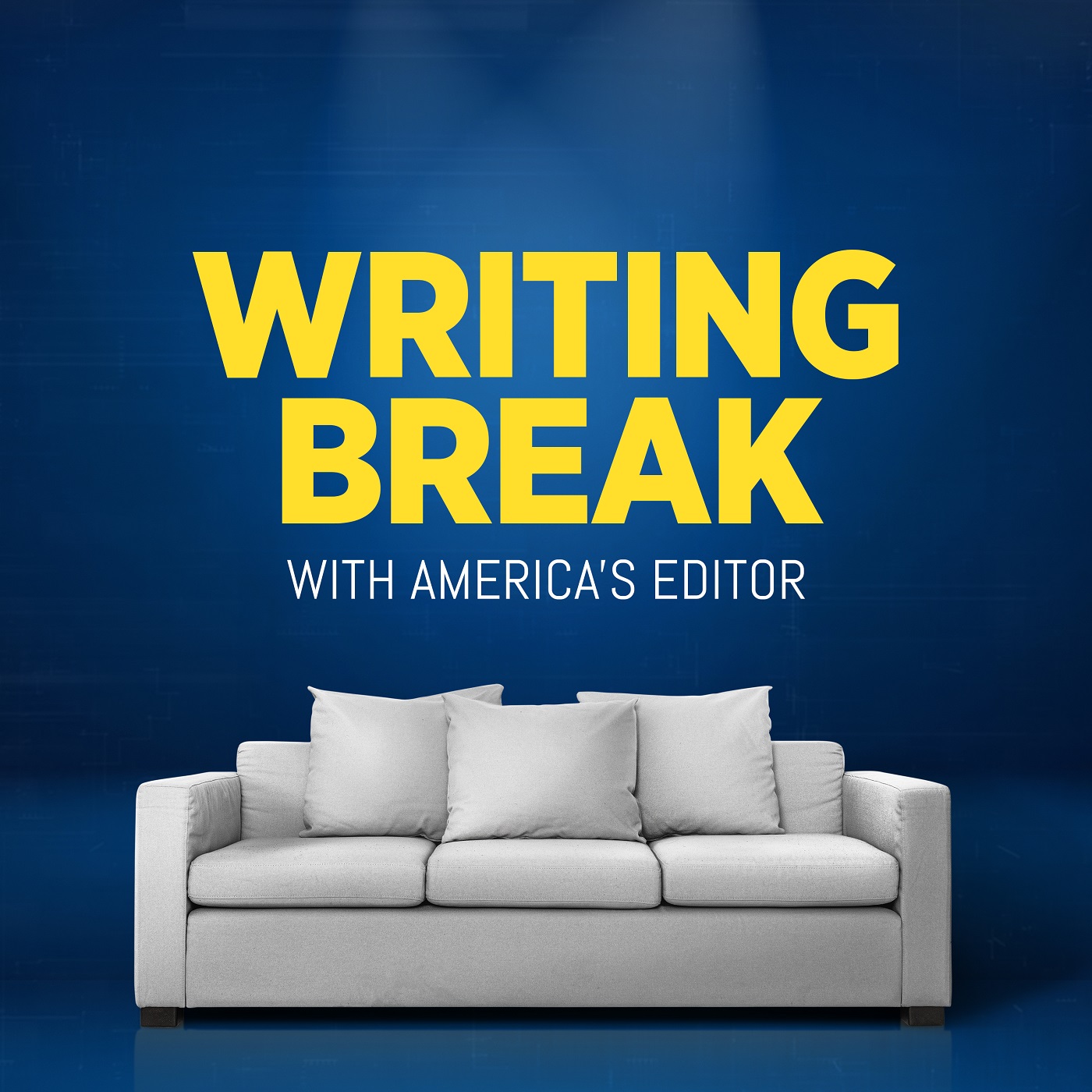Episode 42
How to Calculate Your Page Count
Today we’re finding out how many pages your manuscript will be in print form, and we’re working on a fun writing exercise together. Plus, we discuss the latest publishing news.
- 2022 Royal Palm Literary Awards Finalists | Florida Writers Association - Featured Author
- The Book Lady Bookstore, Savannah, Georgia - Featured Bookstore
- Kensington Buys Erewhon Books
- Turner Buys West Margin Press
- RBmedia Buys German Audio Publisher
- HarperCollins Buys Cider Mill Press
- Rowman & Littlefield Buys Tilbury House's Adult Titles
- Scholastic Buys Learning Ovations
- Kwame Mbalia on Rick Riordan Presents Tristan Strong Punches a Hole in the Sky, the Graphic Novel: Middle Grade Fiction - Miami Book Fair
- Kwame Mbalia to Head New Imprint for Disney
- Free Style Sheet Templates
- Free Writing Tips
Music licensed from Storyblocks:
“More Jam Please” by Raighes Factory
"Puzzles" by Human Win
Transcript
If you have plot bunnies coming out of your plot holes, it’s time for a writing break.
Today we’re finding out how many pages your manuscript will be in print form, and we’re working on a fun writing exercise together. But first, we have publishing news to discuss.
The Writing Break cafe is open, so let’s grab a table and get started, shall we?
So far, the Department of Justice has managed to block Penguin Random House’s acquisition of Simon & Schuster, but several publishing acquisitions did take place this autumnal season. Here is a quick list:
Scholastic acquired Learning Ovations.
Rowman & Littlefield acquired the adult division of Tilbury House Publishers.
HarperCollins acquired Cider Mill Press.
RBmedia acquired John Verlag’s German-language audiobook catalog.
Turner Publishing acquired West Margin Press.
And Kensington Publishing acquired Erewhon Books.
Phew!
An important, undisclosed change happened at Amazon recently. Previously, a book could be listed in up to ten categories and rank in all 10 if they were selling well in those categories. Now, a book can still be listed in up to ten categories, but it can only rank in three categories, regardless of how well it’s selling in other categories.
The change was first discussed on an Author’s Guild forum, and Amazon confirmed this change in a private communication.
Disney-Hyperion has launched a new middle-grade imprint called Freedom Fire, which will feature “stories written by Black creators about Black resilience and Black joy.”
Freedom Fire will be headed by Kwame Mbalia, the bestselling author of the Tristan Strong trilogy. Mbalia will also be at the Miami Book Fair on Thursday, November 17th. Maybe I’ll see you there.
Links to more information about that event and all of these news stories can be found in the show notes of this episode and on writingbreak.com.
Before we head to today’s bookstore, let’s trip on over to the Overthinking Couch to get a closer look at that word count.
Sometimes authors will tell me their book is x number of pages because their Word document is x number of pages. However, the number of pages in a Word document does not reflect how many pages a book will have once it’s printed.
Knowing how many pages your printed book will be is important when calculating print costs, spine width, and even book price. The complexity of a book’s subject matter as well as the number of figures, tables, and images factor in when determining your final printed page count.
I can tell you this. For most young adult fiction, adult fiction, and adult nonfiction, 250 words is considered a page. This might seem like a low number of words per page, but it factors in the space needed for your title page, dedication, author bio, and the like. Some publishers calculate by the number of characters, which is especially helpful when dealing with a complex subject matter, and other publishers divide a manuscript’s word count by either 225 words or 275 words to get their page count estimate because they already know they are going to do a certain amount of either squeezing in or spreading out the words based on the book’s template and book size.
If you are a first-time author wondering how long your book is going to be, dividing your word count by 250 will give you a close estimate of your printed page count. Remember that good writing is not about the word count; it’s about making your words count.
And now, someone alert hardhearted Hannah. We are heading to Savannah.
Ths bookshop, which opened in:Now that we’re here, let’s see what treasures we can uncover.
l nonfiction at this year’s:Now, let’s wander into the Rare Books room for today’s writing tips.
A dialogue tag identifies the speaker (e.g., he said, she whispered), and an action beat can be a description, a thought, or an action that occurs within a dialogue exchange.
Today, we’ll go through the typical evolution of the dialogue tag in a writer’s career, and I’ll provide you with examples to help you write better dialogue that suits your writing style.
I’m going to give you an example of how a writer might begin writing dialogue tags, and I want you to pause the episode and rewrite the text without changing any of the dialogue. Here we go:
“I’ll take that,” Sam said.
“No way. This mission is mine,” Nora said.
“Hand it over. That’s an order,” Sam said.
“An order? From you? That’s rich,” Nora said.
“What is that supposed to mean?” Sam asked.
“Have you ever obeyed an order in your life?” Nora asked.
Now, pause and rewrite it. I’ll wait.
How did you do?
What I read was not good writing, but at least the dialogue tags are benign enough that a reader can skip over them.
When a writer learns about the well-meaning but incomplete writing advice that says “said is dead,”meaning use something other than “said” in your dialogue tags, they might do the following:
“I’ll take that,” Sam declared.
“No way. This mission is mine,” Nora stated.
“Hand it over. That’s an order,” Sam demanded.
“An order? From you? That’s rich,” Nora retorted.
“What is that supposed to mean?” Sam asked.
“Have you ever obeyed an order in your life?” Nora questioned.
Ugh. Now the reader is taxed with actually reading these dialogue tags to see if there’s anything revealing in them. There usually isn’t.
After that, the writer gets a bit more writing advice and learns that dialogue tags can be left out once the speakers are established, which evolves into this:
“I’ll take that,” Sam declared.
“No way. This mission is mine,” Nora stated.
“Hand it over. That’s an order.”
“An order? From you? That’s rich.”
“What is that supposed to mean?”
“Have you ever obeyed an order in your life?”
OK, that’s the best so far, and in many two-person scenes, this is enough and can serve to create a fast-paced moment.
But what if we bring in some action beats?
Sam pointed at the envelope in Nora’s hand. “I’ll take that.”
“No way,” Nora said. “This mission is mine.”
“Hand it over. That’s an order.”
“An order? From you? That’s rich.”
“What is that supposed to mean?”
Nora glared at him. “Have you ever obeyed an order in your life?”
The action beats provide information and . . . well . . . action.
This same passage could be rewritten to let us know what kind of room the characters are in or to have one of the characters leave the scene. Depending on the type of narrator you’re using to tell your story, internal dialogue might be added in as well.
What is most important when deciding if and how to elaborate on your dialogue is to consider whether the additions advance the plot and fit your writing style. Remember that dialogue tags should not get in the way of the story and should not be a burden on the reader.
Here is one last revision that tells us where the characters are and puts a character in position to exit the scene.
Sam pointed at the envelope in Nora’s hand. “I’ll take that.”
Nora slipped the envelope into her sneaker and smoothed down her freefly suit. “No way. This mission is mine.”
Panic rose in Sam’s chest. He needed this assignment to prove he wasn’t a total failure. “Hand it over. That’s an order.”
Nora adjusted her chin strap. “An order? From you? That’s rich.”
Sam tried to stall her. He had to get those mission papers. “What is that supposed to mean?”
Nora made her way to the plane door. “Have you ever obeyed an order in your life?”
What do you think happens next? Does Nora make it off the plane and complete the mission? Is Sam desperate enough to get that envelope from her one way or another?
Most importantly, how would you write that scene in your writing style?
Play around with that scene. Place Sam and Nora anywhere you want and add in whatever action beats and dialogue tags you want, but keep the lines of dialogue exactly the same. I hope you have fun with that exercise.
Next week will be another bonus episode of the past ten writing tip segments stitched together into one review session. The week after that we begin season 3. Thanks for listening, and remember, you deserved this break.
If you would like us to visit your favorite independent bookstore, feature your favorite independent author (even if it’s you), or discuss something you’re overthinking about, please email me at podcast@writingbreak.com.
Thank you for making space in your mind for The Muse today.
Writing Break is hosted by America’s Editor and produced by Allon Media with technical direction by Gus Aviles. Visit us at writingbreak.com or contact us at podcast@writingbreak.com.



